|
| |
|
10th International
System-on-Chip (SoC)
Conference, Exhibit & Workshops
October 24 & 25, 2012
—
Irvine Hilton, CA
SoC Conference Presenters'
Bios & Abstracts
|
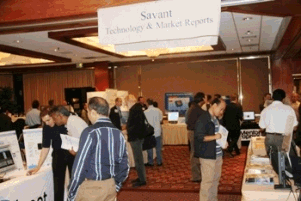 |
|
If you
have any questions or need more information, please contact:
SoC@SavantCompany.com
or
949-851-1714 ― Thank
you!
a
|
|
* Program is subject to change.
SoC Conference Organizing Committee, Technical Advisory Board (TAB), and Savant Company Inc. reserves the rights to revise or modify the
SoC Conference program at
its sole discretion.
|
|
|
|
|
|
|
|
|
Day
One October 24, 2012
SoC Conference Program Agenda* |
|
|
|
Savant
Company Inc.
 |
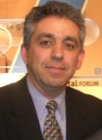 Farhad
Mafie, SoC Conference Chairman,
IEEE OC SSCS & OCEN Chairs. Farhad
Mafie, SoC Conference Chairman,
IEEE OC SSCS & OCEN Chairs.
Welcome and Opening Remarks, Technology/Market Trends.
Farhad Mafie is SoC Conference
Chairman. He has over
20 years of experience in semiconductor and computer businesses and more
than 10 years of university-level teaching experience. He is the former Vice
President of Marketing and Engineering at Toshiba Semiconductor. He has also
worked in strategic marketing, project and design engineering at Lucent
Technologies, Unisys, and MSI Data. Farhad has a Master of Science and a
Bachelor of Science degree in Electronic Engineering from California State
University, Fullerton. He is an author and a translator, and his articles
have been published in a variety of journals and Web-based magazines on
technology and political affairs. In 2003, he published the biography of
Iranian poet and Nobel nominee who lived in exile, Nader Naderpour
(1929-2000), Iranian Poet, Thinker, Patriot. Farhad is also Editor-in-Chief
for the CRC Press SoC Design and Technologies Book Series, which includes
(1) Low-Power NoC for High-Performance SoC Design and (2) Design of
Cost-Efficient Interconnect Processing Units. Farhad is an active member of
IEEE, and he is the chair of IEEE Orange County Solid-State Circuits Society
(SSCS), as well as IEEE Orange County Entrepreneurs' Network (OCEN). He is
also a member of two UCI Advisory Committees: Communication System
Engineering and Embedded System Engineering Certificate Programs.
|
|
|
|
|
Analog and Mixed-Signal
& SOI Design Trends and Challenges for Embedded Smart SoC Platforms
Track Chairman: Dr. Janice H. Nickel, Ph.D., Cognitive Systems
Laboratory, Hewlett-Packard Laboratories.
|
|
|
|
IBM
SOI
Industry Consortium
 |
 Horacio
Mendez, Executive Director, SOI Industry Consortium. Horacio
Mendez, Executive Director, SOI Industry Consortium.
Comparing SOI and Bulk Fully Depleted Devices such as FinFET and Planar
CMOS.
Abstract: The recent
announcement of 3D transistors (FinFETs) in 22nm clearly points out to the
technical superiority of Fully Depleted Transistors. The benefits of Fully
Depleted Transistors have been recognized for some a long time, and are
largely due to a much better sub-threshold slope and short channel effects.
Fully Depleted transistors can be achieved through two basic approaches:
planar Fully Depleted SOI (FD SOI) transistors or with 3D FinFETs. The
technical advantage superiority of FD SOI was demonstrated earlier this
year. Using an ARM M0 Cortex , FD SOI showed a frequency improvement of over
50% on a migration from 28nm Bulk (LP) to FD SOI at 0.9 volts. The results
are even better more impressive at lower voltages. This presentation will
focus on the key role that SOI will play in the formation of 2-dimmentional
and 3-dimensional CMOS transistors and the excellent analog capabilities
that SOI offers.
Bio: TBA.
|
|
|
|
Synopsys
 |
 Navraj S. Nandra,
Senior Director Analog/Mixed-Signal IP Navraj S. Nandra,
Senior Director Analog/Mixed-Signal IP
Design Requirements For 28-nm and 20-nm Analog/Mixed-Signal IP
Abstract: Power, performance
and area (PPA) can be used as the metrics to define competitive
analog/mixed-signal IP that is being integrated on today’s 28-nm SoC’s and
in the early floor-planning phases for the next generation 20-nm platforms.
These platforms are intended for tablets and smartphones making PPA the key
considerations. The expectation is that IP’s such as data converters,
physical interfaces for example USB, DDR and PCI Express, will follow the
same shrink path as digital IP. This is not necessarily the case. In order
to implement improvements in PPA, analog/mixed-signal IP may need to be
re-designed to: 1) accommodate new design and density rules to support
manufacturing; 2) meet aggressive PPA requirements in order to make the
20-nm platforms competitive. This presentation will describe the technical
challenges and propose solutions for analog/mixed-signal IP on leading edge
technology nodes.
Bio: Navraj Nandra joined
Synopsys in February 2005 and is the senior director of marketing for the
DesignWare Analog and Mixed-signal IP products. He has worked in the
semiconductor industry since the mid 80's as an analog/mixed signal IC
designer for Philips Semiconductors, Austria Micro Systems, (San Jose &
Austria) and EM-Marin (Switzerland). He has been responsible for the
complete design of a number of analog front ends in application areas such
as digital audio, RFID and automotive. Navraj holds a masters degree in
Microelectronics, majoring in analog IC design, from Brunel University and a
post-graduate diploma in Process Technology from Middlesex University. He
has presented at numerous technical conferences on mixed-signal design,
analog IP and analog synthesis/EDA.
|
|
|
|
CEA-LETI
France
 |
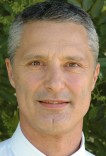 Hughes Metras,
VP, Strategic Partnerships, North America, CEA-LETI, France. Hughes Metras,
VP, Strategic Partnerships, North America, CEA-LETI, France.
Solutions for the future challenges of computing: low power CMOS FDSOI and
Silicon photonics +3D Heterogeneous integration.
Abstract: The computing
industry is driven by two market segments. The low power applications
ranging from mobile terminals to netbook through tablet PCs is becoming the
leading field for the semiconductor industry while the HPC and Data
warehouse field are calling for interconnect innovations due to the
increasing number of switching nodes and memories at the system level. Leti
is working on three key technologies that will have essential contributions
to these issues: FDSOI is facing a bright future for the 28nm node and
beyond thanks to its excellent merit factor in terms of power consumption
and performance with a robust planar technology for industrialization.
Silicon photonics on SOI is a platform that will offer low cost integration
opportunities for advanced logic and memory chips to address switching nodes
interconnection needs and memory access bandwidth limitations. The
presentation will also highlight the importance of setting up new design
environments with photonics and 3D models and libraries as well as testing
tools and methodologies.
Bio: Hughes Metras is VP in
charge of Strategic Partnerships in North America for CEA-LETI, a major
European R&D lab with 200 and 300 mm facilities in Grenoble France. He is
also a visiting staff member at Caltech in the framework of the Alliance for
Nanosystems VLSI where he is in charge of business development for the US
region. Previously, Hughes was VP Marketing and Sales, in charge of business
development and strategic planning. He coordinated Leti's sales and
marketing teams in the field of semiconductors (advanced CMOS as well as
heterogenous integration), imaging and photonics, biomedical technologies as
well as telecommunications. Over the past two years, Mr. Metras has been
involved in major French initiatives with key industrial players for the
emergence of new programs in microelectronics addressing new societal
challenges such as power conversion for industrial, automotive and PV
applications. He has also been involved in the European technology platform
EPOSS (smart system integration) where he coordinated the working group on
key technologies and was a member of the executive committee.
|
|
|
|
X-Fab
 |
 Paul Poenisch and
Sebastian Schmidt. X-FAB. Paul Poenisch and
Sebastian Schmidt. X-FAB.
SOI technologies at X-FAB and their application space.
Abstract: SoC designs have
concentrated on increasing the integration of the high level functions of
systems because those sections of the system usually constitute the majority
of the components of the system. However modern portable appliances such as
smart phones, tablet computers, GPS navigation systems, and MP3 players are
adding more and more functions that are I/O intensive every year. These
functions include orientation sensors, cameras, GPS, accelerometers,
microphones, speakers, headphones, various radio frequency receivers and
transmitters and many others. Each of these functions, as it is added,
increases the number of components needed that are not high level digital
components easily integrated into the main SoC device but often analog,
power, or MEM devices that are not easily integrated into high density
digital processes. The result is that the BOM for these systems tends to
clime with time instead of benefiting from the intended reduction in BOM
that SoC aims for. The solution to this problem is the analog and power
equivalent of the digital SoC, ICs that can integrate a variety of analog,
power, and other functions into a single die. However, accomplishing this
integration is easier said than done. Until recently processes that could
accomplish integrations of these types of functions were not economical.
That is now changing as mixed-signal processes developed with smart
functional integration are introduced.
Bio: Paul Poenisch is an
electrical engineer working in the applications group within the marketing
department of X-Fab. His research work focused on modeling of
photolithograph processes. He has been in the semiconductor industry for
over 32 years working on process and device development for about 25 of
those years then switching to the process application area. In that role he
works with customers to optimize the application of X-Fab processes to their
products.
|
|
|
|
Morning Break
|
Morning Break
|
|
|
|
Microsemi
 |
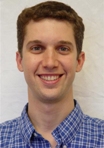 Daniel Feldman,
Vice President, Analog Mixed Signal Group Microsemi Corporation. Daniel Feldman,
Vice President, Analog Mixed Signal Group Microsemi Corporation.
Trends in Analog and Mixed-Signal Design.
Abstract: TBD.
Bio: Daniel Feldman is the
Vice President of Sales for Microsemi’s Analog and Mixed-Signal Group and a
member of the HDBaseT Alliance PoH technical committee. He is a former
chairperson of the Ethernet Alliance PoE Technical Committee and was an
active member of the IEEE802.3at Task Force. Previously, Mr. Feldman worked
at Microsemi in several Business Development and Marketing roles, for
PowerDsine as Senior Product Manager responsible for Outbound Marketing
activities in the Americas, at IC4IC as System Architecture Group Manager,
as a VHDL Engineer at NICE Systems and as VLSI Engineer at RAFAEL. Mr.
Feldman holds an MBA from UC Berkeley’s Haas School of Business and a B.Sc.
(Cum Laude) in Computer Engineering from the Technion Institute of
Technology in Haifa, Israel.
|
|
|
|
S3 Group
 |
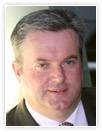 Dermot
Barry, Vice President Silicon, S3 Group. Dermot
Barry, Vice President Silicon, S3 Group.
The case for developing Custom Mixed-Signal SoCs.
Abstract: Historically, the
focus in the semiconductor industry was always how quickly you could move to
the next geometry node. Now the question is how to make money by sustaining
a specific node.” iSuppli (Len Jelinek ) Therein lies an opportunity for
systems houses and OEMs, to develop custom mixed-signal SoC solutions for
applications that just 3 to 4 years ago could not have justified the NRE to
design, test and develop a complete product. An insatiable need for higher
levels of integration of mainly digital SoCs, in high volume consumer
applications (smartphones, tablets) has forced these applications to the
most advanced process nodes (28nm ramping in 2012), and in doing so has
freed up capacity in what are now mature process nodes (0.18µm to 90nm). In
an effort to maintain fab utilization, manufacturers have lowered mask
costs, in some instances quite drastically. There is clearly an opportunity
for OEMs that traditionally couldn’t have justified development NRE, to now
do so targeting process nodes at 90nm and older. In parallel, firms that
develop and license Mixed Signal Intellectual Property (MSIP) now offer a
growing portfolio of silicon proven MSIP in these mature processes. This
further reduces the development time and cost, and more importantly risk for
OEMs. This paper presents a case study from S3 Group, which makes the case
for custom mixed signal SoC developments for applications for which sales
volumes start at 50K+ units per annum. We will show how S3 Group was able to
reduce the Bill of Material (BOM) cost for an OEM’s first generation product
by greater than 50% by integrating the functionality of a number of standard
ASSPs and discrete components into a two chip solution. While BOM cost
reduction was the primary goal, other benefits included an increase in
product reliability, a decrease in the product size, a vastly improved
position in terms of security of supply and a design that can be used as the
basis for further enhancements in the future.
Bio: Dermot Barry has served as S3 Group's Vice President of the Silicon
Business Unit since January 2006. Dermot's role involves setting the
strategic direction for S3 Group's System-on-Chip (SoC) design services
business and the Mixed Signal IP product portfolio. Dermot has full
responsibility for global sales and operations and manages key strategic
relationships, delivering successful solutions to OEM and Semiconductor
clients in North America, Europe and Asia. In the period 2000 to 2005 Dermot
was General Manager of the Wireless Systems Business Unit at S3 Group. Prior
to re-joining S3 Group Dermot worked with Cadence Design Systems, from
1997-2000, as a Senior Sales Manager for Design Services in UK and Israel,
again broadening his expertise and experience in the industry. Dermot first
joined S3 Group in 1994 where he served in various Sales & Business
Development roles, rising to become Vice President of US Sales & Business
Development at S3 Group where he drove S3 Group's initial ventures into the
North American marketplace while based in San Jose. Dermot started his
career as a Research & Development Engineer for Philips Research in
Eindhoven, The Netherlands, from 1985-1994 where he was responsible for
analogue IC design focusing on ICs for mobile, broadcast and cordless
communications. He currently serves on the Executive Committee of MIDAS
Ireland and on the Design Advisory Board of the NMI UK. Dermot graduated
from University College Dublin in 1985 with a 1st Class Honors Degree in
Electronic Engineering.
|
|
|
|
Microsemi
Keynote
 |
 Jim
Aralis, Chief Technology Officer (CTO), and Vice President of R&D. Jim
Aralis, Chief Technology Officer (CTO), and Vice President of R&D.
Keynote:
"A New Paradigm: Disruptive SoC Design & Market Strategies."
Jim Aralis has served as
chief technology officer and vice president of R&D for Microsemi since
January 2007. He has more than 30 years experience in developing custom
analog device and process technologies, analog and mixed-signal ICs and
systems, and CAD systems.
Jim played a key role in transitioning Microsemi to a virtually fabless
model, supporting multiple process technologies including, high voltage and
high power BCD/CMOS, high power high integration CMOS, GaAs, SiGe, IPD, RF
CMOS SoI, GaN, SiC, and several high-density packaging technologies.
From 2000 to 2007, Jim established and served as senior design director of
Maxim Integrated Product’s engineering center in Irvine, Calif. Before that,
he spent 7 years with Texas Instruments/ Silicon Systems as mixed-signal
design head and senior principal engineer. Additional experience includes 11
years with Hughes Aircraft Company in positions of increasing responsibility
including senior scientist. Jim earned a bachelor of science degree in
Math Applied Science and Physics and a master of science in electrical
engineering from UCLA. He holds 9 patents for circuit and system design.
|
|
|
|
Panel |
Panel:
"3-D
ICs . . . Technologies, Trends, Possibilities, and Challenges."
|
|
|
|
Panel
Microsemi
Apache Design
Ansys
Mentor Graphics
Micron
BEEcube Inc.
BeSang Inc.
 |
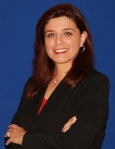 Dr.
Sherie Motakef, Savant Company Inc., CTO, SoC Conference Organizing
Committee. Dr.
Sherie Motakef, Savant Company Inc., CTO, SoC Conference Organizing
Committee.
Moderator
Bio: Dr. Sherie Motakef holds
bachelor’s, master’s and doctorate degrees in Materials Sciences and
Engineering and Optics from MIT and the University of Arizona. To complement
her technical background, Dr. Motakef has over 15 years of experience in new
business development, strategic and tactical marketing, and development of
new applications in the semiconductors, chemicals, photonics,
telecommunications, and defense industries. She has held various management
roles at companies such as Air Products and Chemicals, Cymer, FEI, CVI
Melles Griot, and BAE Systems. In her most recent role, she was the general
manager of the Advanced Ceramics division of BAE Systems. Dr. Motakef is the
author/co-author of multiple technical papers in peer-reviewed journals, she
holds 1 US patent, and she is the recipient of awards from the American
Chemical Society and the American Ceramic Society.
Panelists:
1. Lenny Reeves, Design
Manager, Microsemi Corporation.
2. Dr. Norman Chang, VP and Sr. Product Strategist, Apache Design, subsidiary of Ansys, Inc.
3. Dr. Stephen Pateras, Product Marketing Director, Silicon Test, Mentor
Graphics.
4. Joe Jeddeloh, Director of
the Vendor's Advanced Storage Technology Center, Micron Technology, Inc.
5. Dr. Sang-Yun Lee, Founder,
President, & CEO, BeSang Inc.
6. TBD.
|
|
|
|
Panelist
BeSang Inc.

|
 Dr.
Sang-Yun Lee, Founder, President, & CEO, BeSang Inc. Dr.
Sang-Yun Lee, Founder, President, & CEO, BeSang Inc.
Panelist
Bio: Dr. Lee is CEO of BeSang Inc., a fabless IP company is located in
Beaverton, Oregon. A member of GSA since 2007, BeSang Inc. is a pioneer in
3D IC with nano-scale 3D integration and unrestricted 3D interconnections
for the next generation of 3D IC. Dr. Lee has 23 years of industry and
graduate research experience focused on semiconductor devices and process
integration. He holds M.S. and Ph.D. degrees in Electrical Engineering from
Washington University in St. Louis, MO and Arizona State University in
Tempe, AZ, respectively. Before founding BeSang, he held various positions
at Samsung, Motorola, and Integrated Device Technology.
|
|
|
|
Panelist
Mentor Graphics

|
 Dr.
Stephen Pateras, Product Marketing Director, Silicon Test, Mentor Graphics. Dr.
Stephen Pateras, Product Marketing Director, Silicon Test, Mentor Graphics.
Panelist
Bio: Stephen Pateras is product marketing director within Mentor Graphics
Silicon Test Solutions group and has responsibility for the company’s ATPG
and DFT products. His previous position was VP Marketing at LogicVision
where he was instrumental in defining and bringing to market several
generations of LogicVision’s semiconductor test products. From 1991 to 1995,
Stephen held various engineering lead positions within IBM’s mainframe test
group. He received his Ph.D. in Electrical Engineering from McGill
University in Montreal, Canada.
|
|
|
|
Panelist
Microsemi

|
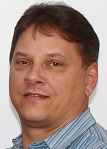 Lenny Reeves,
Design Manager, Microsemi Corporation. Lenny Reeves,
Design Manager, Microsemi Corporation.
Panelist
Bio: Lenny Reeves joined Microsemi in January 1981. He has more than 30
years of experience in microelectronic packaging, with an emphasis on multi
chip module packaging and manufacturing. He has supported the design and
development of stacked multi-chip module packages and the processes required
to support the technologies in digital, analog and RF system design. He
holds several US patents in the microelectronics packaging field.
|
|
|
|
Panelist
Micron Technology

|
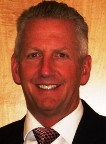 Joe Jeddeloh,
Director, Controller Development, Micron Technology. Joe Jeddeloh,
Director, Controller Development, Micron Technology.
Panelist
Bio: Joe Jeddeloh is Director of Controller Development, DRAM Solutions, at
Micron Technology. Mr. Jeddeloh has worked for Micron for the past 17 years.
He is named on over 200 patents in the areas of memory system architecture
and controller development. His responsibilities include the management of
the Minneapolis Design Center. His team is involved with the development of
Micron’s Hybrid Memory Cubes (HMC), PCIe SSD controllers and DRAM testers.
Mr. Jeddeloh holds a Bachelor of Science degree in electrical engineering
from the University of Minnesota.
|
|
|
|
Panelist
Ansys, Inc.
Apache Design

|
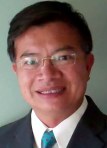 Dr.
Norman Chang, VP and Sr. Product Strategist, Apache Design, subsidiary of
Ansys, Inc. Dr.
Norman Chang, VP and Sr. Product Strategist, Apache Design, subsidiary of
Ansys, Inc.
Panelist
Bio: Norman Chang co-founded Apache Design Solutions in February 2001 and
currently serve as VP and Sr. Product Strategist at Apache Design, a
subsidiary of Ansys, Inc. Before co-founding Apache, Dr. Chang worked at
Palo Alto HP Labs, leading a group focusing on interconnect related
signal/power integrity issues and
contributing to the HP-Intel IA64 micro-processor design. In 2000, he
co-authored a widely read book on state-of-the-art methods for IC
interconnect titled "Interconnect Analysis and Synthesis", published by John
Wiley & Sons. He has twelve patents, and published more than 45 technical
papers in journals and conferences. Dr. Chang receives his BS, MS, and Ph.D.
in Electrical Engineering and Computer Sciences from University of
California, Berkeley respectively at 1985, 1987, and 1990. He is currently a
committee member for ESDA-EDA and Si2 Open3D workgroups. |
|
|
|
Lunch |
Lunch |
|
|
|
|
Packaging Technologies, Trends & Challenges
Track Chairman: Dr. Reza Ghaffarian, Jet Propulsion Laboratory,
California Institute of Technology.
|
|
|
|
JPL
Keynote

 |
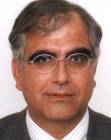 Dr.
Reza Ghaffarian, Jet Propulsion Laboratory, California Institute of
Technology. Dr.
Reza Ghaffarian, Jet Propulsion Laboratory, California Institute of
Technology.
Keynote: "FPGA Packaging Trend and System Approach for Reliability."
Bio: Dr. Reza Ghaffarian has
more than 30 years of industrial and academic experience. For the last 19
years at NASA/JPL, he led R&D reliability and quality assurance activities
in advanced electronic packaging and has been a consultant resource for most
JPL projects including Mars Curiosity Rover. He received many award
including the NASA Exception Service Medal for outstanding leadership and
industrial partnership. He has authored more than 150 technical papers,
co-editor of a CSP book, 7 book chapters, and two guidelines. He serves as
technical Advisor/Committee to IPC, Microelectronics Journal, SMTA, IMAPS
and IEEE IEMT/CPMT. He received his Ph.D. in 1982 from University of
California at Los Angeles (UCLA).
Abstract:
Commercial-off-the-shelf column grid array packaging (COTS CGA) technologies
in high reliability versions are now being considered for use in a number of
National Aeronautics and Space Administration (NASA) electronic systems.
This presentation reviews technology of IC packaging developed to meet
demands of high processing powers, which come in area array packages. It
then provides a more detail discussion on using field programmable gate
array (FPGA), which enable programmer to modify software on-the-spot during
product use. The FPGAs come in area array packages now have more than
thousand solder balls/columns under package area not only need to be
correctly joined onto PCB; they also should show adequate system reliability
meeting thermo-mechanical requirements for application. In addition, recent
FPGA packages not only come with flip-chip with underfill exposed, they have
decoupling capacitors on the package substrates that further added
complexity. The key packaging trends and system reliability approaches with
test data will be also presented.
|
|
|
|
Afternoon Break |
Afternoon Break |
|
|
|
|
Emerging Memories: Technologies, Trends & Challenges
Track Chairman: Dr. Muhammad M Khellah, Research Scientist at Intel
Labs.
|
|
|
|
HP
Keynote
 |
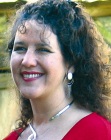 Dr.
Janice H. Nickel, Ph.D., Cognitive Systems Laboratory, Hewlett-Packard
Laboratories. Dr.
Janice H. Nickel, Ph.D., Cognitive Systems Laboratory, Hewlett-Packard
Laboratories.
Keynote:
“Making Memristors a Reality: Advances in Physical Understanding and Device
Integration.”
Abstract: Memristors are the
fourth fundamental circuit element which was predicted in the early 1970’s
and reduced to practice in 2008. Unlike capacitors or inductors, memristors
do not store charge or energy, but do store information. This quality makes
them a candidate for next generation memory technology, potentially
replacing Flash and DRAM, whose ability to scale to future technology nodes
is limited by the fact that they rely on stored charge. Because of the
ability to create highly non-linear memristive devices, this technology is
feasible for true crossbar memories –without requiring select transistors.
This will not only permit highly dense, stackable memory, it also will
enable integration of memristive memory with compute processors. In this
talk I will define memristive systems, describe their electrical properties
and how they differ from the three other fundamental passive circuit
elements. I will highlight properties of memristive devices, including
switching speed, switching energy and analogue operation. Advances in
fabricating memristors in fully CMOS compatible materials and processes, as
well as results from integrated CMOS + memristor crossbar structures from
the SK Hynix – HP Joint Development will be presented. Possible future
applications of the technology will be discussed.
TBD
Bio: Dr. Janice Nickel is a
Research Manager in the Cognitive Systems Laboratory at Hewlett-Packard
Laboratories. She obtained her BA in Physics, and PhD in Materials Science
and Engineering, from the University of California at Berkeley, and has
nearly 20 years industrial experience inventing, developing and transferring
innovative products for a DOW 30 company. She is currently leading the
memristor productization effort. In this capacity, she is directing HP’s
participation in the joint development of the technology with SK Hynix, as
well as creating proprietary CMOS compatible memristor fabrication
processes. This effort leverages a her previous experience in the
development of MRAM crossbar memory technologies. Prior to working on
memristors, Dr. Nickel invented a unique programmable drug delivery platform
– “Smart Drug Delivery” – which repurposes HP’s mature ink jet technology to
address unmet pharmaceutical market needs. She catalyzed multiple business
units in disparate geographic locations to develop component modules which
she integrated into a proof-of-concept demonstrator. She created a business
plan, attracted investors, and transferred the technology to the startup
Janisys, Ltd. The Smart Drug Delivery technology won the 2007 Silicon Valley
Business Journal’s Emerging Technology Award in Medical Devices, and was
recognized in Popular Science’s “Best of 2008” in the Health category.
Janisys is currently developing the technology in partnership with a major
pharmaceutical company. Dr. Nickel has 45 U.S. Patents awarded, over 40
scientific papers published, and numerous invited presentations.
|
|
|
|
Intel
 |
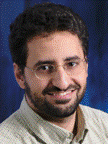 Dr.
Muhammad M Khellah, Research Scientist at Intel Labs. Dr.
Muhammad M Khellah, Research Scientist at Intel Labs.
Scaling Trends for Dense on Die Memory Arrays.
Abstract: In this talk, we will go over scaling trends of dense embedded
memory arrays in 22nm and beyond. Starting with conventional 6T SRAM,
scaling continues with read and write assist schemes at the expense of extra
design complexity, energy, and area. We will also address large array
designs based on 8T cell, eDRAM 1T1C cell, and STT 1T1R cell. These
technologies are increasingly becoming important alternatives to 6T SRAM
that are predicted to continue the scaling of on die memories.
Bio:
Muhammad Khellah is a Research Scientist at Intel Labs, where he works on
novel circuits and architectures focused on future low power microprocessor
designs. After obtaining his PhD from the University of Waterloo Canada in
1999, he joined Intel and was involved in the design of SRAM caches for the
Pentium microprocessor products. He has published over 70 technical papers
in refereed international conferences and journals. He also has 55 patents
granted, and 20 pending in the VLSI design area. Dr. Khellah currently
serves as an associate editor for TCAS-I and is on the technical program
committees of the ISLPED and the CICC.
|
|
|
|
SanDisk
 |
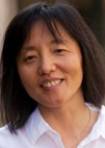 Dr.
Yan Li, Sr. Director Memory Design & Advanced NAND Flash Memory
Development, SanDisk. Dr.
Yan Li, Sr. Director Memory Design & Advanced NAND Flash Memory
Development, SanDisk.
NAND Flash
Memory Technology Trends and Challenges.
Bio: Yan Li received B.S. degree from University of Science and Technology
of China. She received M.S. and Ph.D. from Lehigh University in
Pennsylvania. In 1998, she joined SanDisk Corporation, Sunnyvale, CA. She
has been working on the circuit design of NAND flash memory since 2000. She
led the team to design the industry first 3 bits per cell NAND memory and
put it into production. She is currently a senior director for memory design
and leading the advanced NAND flash memory development.
|
|
|
|
SiTime Corporation
&

 |
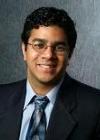 Dr. Sudhakar
Pamarti, Associate Professor, University of California, Los Angeles. Dr. Sudhakar
Pamarti, Associate Professor, University of California, Los Angeles.
Abstract: Timing references provide the heart beat of electronic systems.
The electronics industry has historically relied on quartz-based timing
components. Until recently timing devices have remained as stand-alone
components since SoC designers and semiconductor manufacturers have never
been able to integrate quartz-based timing.
Over the past decade MEMS technology has become omnipresent in electronics
and has since migrated to timing components. MEMS resonators can be a
high-precision clock source for a SoC. Now available in die form,
ultra-low-power zero-footprint MEMS resonators can be cost-effectively
integrated into standard semiconductor packaging, replacing bulky external
quartz devices. For SoC designers, MEMS resonators bring enhanced
performance and new functionality providing time keeping (e.g. real-time
clocks) and power management (e.g. sleep or wake-up). At the system level,
integrated MEMS resonators improve system performance, reliability and
resilience, power consumption and costs.
Bio: Dr. Sudhakar Pamarti is an associate professor of electrical
engineering at the University of California, Los Angeles. He received a
Bachelor of Technology degree in electronics and electrical communication
engineering from the Indian Institute of Technology, Kharagpur in 1995, and
M.S. and Ph.D. degrees in electrical engineering from the University of
California, San Diego in 1999 and 2003, respectively. Prior to joining UCLA,
he worked at Rambus Inc. (2003-2005) and Hughes Software Systems (1995-1997)
developing high-speed I/O circuits and embedded software and firmware for a
wireless-in-local-loop communication system respectively. Dr. Pamarti is a
recipient of the National Science Foundation’s CAREER award for developing
digital signal conditioning techniques to improve analog, mixed-signal, and
radio frequency integrated circuits.
|
|
|
|
|
Day TWO October 25, 2012
SoC Conference Program Agenda* |
|
|
|
Savant
Company Inc.
 |
 Farhad
Mafie, SoC Conference Chairman,
IEEE OC SSCS & OCEN Chairs. Farhad
Mafie, SoC Conference Chairman,
IEEE OC SSCS & OCEN Chairs.
Bio: Farhad Mafie is SoC Conference
Chairman. He has over
20 years of experience in semiconductor and computer businesses and more
than 10 years of university-level teaching experience. He is the former Vice
President of Marketing and Engineering at Toshiba Semiconductor. He has also
worked in strategic marketing, project and design engineering at Lucent
Technologies, Unisys, and MSI Data. Farhad has a Master of Science and a
Bachelor of Science degree in Electronic Engineering from California State
University, Fullerton. He is an author and a translator, and his articles
have been published in a variety of journals and Web-based magazines on
technology and political affairs. In 2003, he published the biography of
Iranian poet and Nobel nominee who lived in exile, Nader Naderpour
(1929-2000), Iranian Poet, Thinker, Patriot. Farhad is also Editor-in-Chief
for the CRC Press SoC Design and Technologies Book Series, which includes
(1) Low-Power NoC for High-Performance SoC Design and (2) Design of
Cost-Efficient Interconnect Processing Units. Farhad is an active member of
IEEE, and he is the chair of IEEE Orange County Solid-State Circuits Society
(SSCS), as well as IEEE Orange County Entrepreneurs' Network (OCEN). He is
also a member of two UCI Advisory Committees: Communication System
Engineering and Embedded System Engineering Certificate Programs.
|
|
|
|
|
Emerging Technologies, Trends, and Possibilities in Designing Multicore
Smart SoC Platforms.
Track
Chairman: Professor Masatoshi Ishikawa, University of Tokyo, Japan.
|
|
|
|
AMD

|
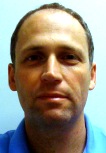 Maurice
Steinman, an AMD fellow; Alexander Branover, principal staff. Maurice
Steinman, an AMD fellow; Alexander Branover, principal staff.
SoC Performance and Performance/Watt Optimization.
Abstract: CPU and GPU on-die
interaction and system memory sharing introduces non-trivial dependencies
that have an impact on system-on-a-chip (SOC) performance and power.
Software control over on-die components focuses mostly on each computing
element, does not address an SOC in its entirety, and has an inherent
inertia affecting the performance per watt. The ability to dynamically
identify the CPU-centric or GPU-centric activity and promptly optimize the
operational point and per-component power budget is a key factor in
maximizing the performance and performance/watt of the heterogeneous CPU +
GPU SOC. An on-die power management controller (PMC) dynamically allocates
power to the compute unit (CU) that needs more power. This allows for CU
performance improvement and faster task completion. Additionally, to
exchange power credits between CUs, the PMC allocates power from other SOC
components (memory PHY, I/O engines, internal display, etc.) in scenarios
when these components are idle or less active than the respective power
level to which the cooling solution is designed. Dynamic power allocation
among SOC components maximizes the performance of the CPU- and GPU-focused
workloads, and optimizes the performance of load-balanced workloads (i.e.,
OpenCL) while maintaining the SOC power within the thermal-design power (TDP)
envelope.
Bio: Alexander Branover is an AMD principal staff member involved in SOC
architecture and power management. His research interests include SOC
architecture, design, power management, and I/O protocols. Branover has
worked on processor and system projects for more than 18 years. He has an MS
in computer engineering from Technion (Institute of Technology), Israel, and
is a member of the Peripheral Component Interconnect Special Interest Group
(PCI-SIG).
Bio: Maurice Steinman is an AMD fellow involved in NorthBridge and SOC
architecture and power management. His research interests include client and
server SOC architecture, design, and power management. Steinman has worked
on processor and system projects for more than 25 years. He has a BS in
computer and systems engineering from Rensselaer Polytechnic Institute and
is a member of the Peripheral Component Interconnect Special Interest Group
(PCI-SIG).
|
|
|
|
STMicroelectronics
 |
 Dr.
Florentine DUBOIS & Marcello
Coppola, R&D Director at STMicroelectronics. Dr.
Florentine DUBOIS & Marcello
Coppola, R&D Director at STMicroelectronics.
Virtualization-Ready SoC:
Challenges for Heterogeneous Multicore Architectures.
Abstract: Nowadays
consumer and mobile devices are pervasive in our everyday live and the
application complexity is increasing exponentially. System-on-Chips for such
devices are heterogeneous multi-core processors with specific hardware
accelerators in which the performance/watt ratio is key selling and
differentiation point. The required SoC flexibility is promoting an
application-centric model, which faces new challenges such as openness
(total decoupling from hardware to application software), security,
programmability and performance. Virtualization, widely used in modern
datacenter, allowing server consolidation, energy efficiency, green IT,
business continuity, disaster recovery and data protection, could be also
suitable to cope with some of the challenges faced by heterogeneous
multi-core embedded systems. In this presentation, first a
virtualization-ready SoC architecture addressing the aforementioned
challenges will be presented. Next, we introduce the hardware virtualization
by focusing not only on the well-known processor virtualization but on the
hardware assisted virtualization for the overall SoC. Finally, some real
scenarios in which virtualization could bring an added value are presented.
Bio: Florentine Dubois received a Master degree in Computer Science from
Institut National Polytechnique de Grenoble, in 2009. She then worked at
TIMA laboratory (Grenoble) on routing in 3D Network-on-Chips before
beginning in 2010 a PhD in collaboration with the same laboratory and
STMicroelectronics. Her research interests are mainly focused on routing in
irregular topologies and on the development of high-level performance
estimation methods for Networks-on-Chips.
Bio: Marcello Coppola graduated in Computer Science from the University of
Pisa, Italy in 1992. He joined the Transputer architecture group in INMOS,
Bristol (UK), doing research in multi-core communication together with the
key technical people of Transputer technology with special focus in the C104
router. Later, he moved to the Advanced System Technology R&D group of
STMicroelectronics, in which started and leaded different research programs.
The last one, where he and his team developed the first industrial
multiple-die Network-on-Chip called Spidergon STNoC, ended with the
deployment company-wide of the technology and first integration in different
32nm multimedia and mobile SoCs. Currently, he is a Director in Home
Entertainment & Displays Group, of STMicroelectronics, in Grenoble (France).
His research interests include several aspects of design technologies for
System-on-Chip, with particular emphasis to modeling, verification,
network-on-chip, multi-core architecture and programming models. He's
co-author and/or co-editor of different books and of over 50 technical
articles. He is serving or has served as program and/or organizing member in
numerous top international conferences and workshops. He has also served as
reviewer for international conferences as well as journals and holds a
number of patents.
|
|
|
|
Target Compiler Technologies
 |
 Steve
Cox, VP, Target Compiler Technologies - Steve
Cox, VP, Target Compiler Technologies -
Maximizing Performance and Power Efficiency in Multicore Systems
Abstract: SoCs with multicore architectures promise increased performance at
reduce power. But, squeezing this performance out of such architectures has
proven challenging, to put it mildly. The focus has turned toward software
development, including tools, APIs, languages, and methodologies that
promise to unlock all the inherent performance such multicore SoCs have to
offer. Target’s MP Designer is a tool suite that enables iterative
refinement of parallelization choices resulting in an implementation that is
optimally balanced, providing the highest performance and lowest power.
Bio: Steve Cox joined Target Compiler Technologies in 2006 and leads
Target’s North American activities. Steve has a long history of innovation
in the design and verification of processors and SoCs, including work at
companies such as Accelchip, Apple, Ball Aerospace, Cadence, Cisco,
Conexant, Intel, Motorola/Freescale, Nortel, and Solbourne Computer. Steve
holds patents in the area of transaction-based verification of SoCs and is
an alumnus of the University of Colorado. Steve currently resides in
Boulder.
|
|
|
|
University of Tokyo
Japan

|
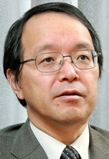 Professor
Masatoshi Ishikawa, University of Tokyo, Japan. Professor
Masatoshi Ishikawa, University of Tokyo, Japan.
High Speed Image Processing and Its Application Systems.
Abstract: Although
conventional Image processing systems use video-rate for sampling images,
video-rate is not sufficient for high-speed images of targets. Ishikawa et
al. developed high-speed vision including general-purpose vision chips,
target tracking vision chips column parallel intelligent vision systems, and
reconfigurable embedded image processing systems. In addition, various types
of application systems which open a new era of high-speed vision were
developed. In my talk, basic architectures and implementations of high speed
vision as well as its applications including human interface, robots,
factory automation, visual inspection, bio-medical applications, vehicles,
ITS, security, media, and interactive art are shown.
Bio: Masatoshi Ishikawa received the B.E., M.E., and Dr. Eng. degrees in
mathematical engineering and information physics from the University of
Tokyo, Japan, in 1977, 1979, and 1988, respectively. From 1979 to 1989, he
was a Senior Researcher at Industrial Products Research Institute, Tsukuba,
Japan. From 1989 to 1999, he was an Associate Professor with the Department
of Mathematical Engineering and Information Physics, University of Tokyo,
where, from 1999 to 2001, he was a Professor. He was a vice-president and an
executive vice-president of University of Tokyo, from 2004 to 2005, from
2005 to 2006, respectively. Since 2001, he has been a Professor of
information physics and creative informatics at the University of Tokyo. His
current research interests include robotics, sensor fusion, high speed
vision, visual feedback, dynamic image control, and meta perception.
|
|
|
|
UCI
Keynote

|
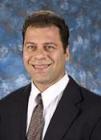
Payam Heydari, Professor,
Nanoscale Communication Integrated Circuits (NCIC) Labs, Dept. of EECS,
University of California, Irvine.
Terahertz and Millimeter-Wave
Imaging: New Frontiers of Electronics.
Abstract: This keynote speech
gives comprehensive overview of Terahertz and millimeter-wave (including
both active and passive) imaging and their enabling and exciting
applications. The speech then reviews current efforts to push the design of
integrated circuits to operate at millimeter-wave and Terahertz frequency
range. The talk covers daunting challenges in designing Terahertz building
blocks and active/passive imaging systems at various levels of design
hierarchy including system- and architecture-level down to the circuit- and
device-levels.
Bio: Payam Heydari (S’98–M’00–SM’07) received the B.S. and M.S. degrees
(with highest honors) in electrical engineering from the Sharif University
of Technology in 1992 and 1995, respectively. He received the Ph.D. degree
in electrical engineering from the University of Southern California in
2001. Dr. Heydari is currently a Full Professor of Electrical Engineering
and also School of Engineering Faculty Vice Chair. His research interests
include the design of high-speed analog, radio-frequency (RF), and
mixed-signal integrated circuits. He is the (co)-author of one book and 100
journal and conference papers. The Office of Technology Alliances at UCI has
named Dr. Heydari one of 10 outstanding innovators at the university. Dr.
Heydari is the co-recipient of the 2009 Business Plan Competition First
Place Prize Award and Best Concept Paper Award both from Paul Merage School
of Business at UC-Irvine. He is the recipient of the 2010 Faculty of the
Year Award from UC-Irvine's Engineering Student Council (ECS), the 2009
School of Engineering Fariborz Maseeh Best Faculty Research Award, the 2007
IEEE Circuits and Systems Society Guillemin-Cauer Award, the 2005 NSF CAREER
Award, the 2005 IEEE Circuits and Systems Society Darlington Award, the
2005 UCI’s School of Engineering Teaching Excellence Award, the Best Paper
Award at the 2000 IEEE International Conference on Computer Design (ICCD),
the 2000 Honorable Award from the Department of EE-Systems at the University
of Southern California, and the 2001 Technical Excellence Award in the area
of Electrical Engineering from the Association of Professors and Scholars of
Iranian Heritage (APSIH). He was recognized as the 2004 Outstanding Faculty
at the UCI’s EECS Department. Dr. Heydari’s paper entitled: Design of Ultra
High-Speed Low-Voltage CMOS CML buffers and Latches, published in October
2004 issue of the IEEE Trans. on VLSI Systems, was ranked first among top
downloaded articles in 2007. His research on novel low-power multi-purpose
multi-antenna RF front-ends received the Low-Power Design Contest Award at
the 2008 IEEE Int'l Symposium on Low-Power Electronics and Design (ISLPED).
He is the co-founder of ZeroWatt Technologies, Inc., a fabless semiconductor
startup in low power mixed signal integrated circuits design. Dr. Heydari is
a Guest Editor of IEEE Journal of Solid-State Circuits. He currently serves
on the Technical Program Committees of Compound Semiconductor IC Symposium (CSICS)
and International Symposium on Low-Power Electronics and Design (ISLPED). He
was an Associate Editor of the IEEE Transactions on Circuits and Systems –
part I from 2006 to 2008. He was a Technical Program Committee member of the
IEEE Custom Integrated Circuits Conference (CICC), and International
Symposium on Quality Electronic Design (ISQED).
|
|
|
|
Panel |
Panel:
“Emerging
Technologies, Trends, and Possibilities in Designing Multicore SoC
Platforms."
|
|
|
|
Panel
11:00 -
12:00
Target Compiler Technologies
Embedded Insights
GigOptix
Inc.
Breker
Verification Systems
Emulex
UC
Riverside
Savant
Company Inc.
|
 Robert
Cravotta is the principal analyst at Embedded Insights Inc, and Contributing
Editor at EDN Magazine. Robert
Cravotta is the principal analyst at Embedded Insights Inc, and Contributing
Editor at EDN Magazine.
Moderator
Bio: Robert Cravotta is the
principal analyst at Embedded Insights Inc. As a former Technical Editor
covering Embedded Processing at EDN, Robert has been following and
commenting on the embedded processing space since 2001. His expertise
includes software development and system design using microprocessors,
microcontrollers, digital signal processors (DSPs), multiprocessor
architectures, processor fabrics, coprocessors, and accelerators, plus
embedded cores in FPGAs, SOCs, and ASICs. Robert's embedded engineering
background includes 16 years as a Member of the Technical Staff at Boeing
and Rockwell International working on path-finding avionics, power and laser
control systems, autonomous vehicles, and vision sensing systems.
1.
Steve Cox, Vice President, Target Compiler Technologies.
2.
Dr. Shireesh Verma, Pre-Silicon Validation Lead, Intel.
3. Wayne
Locke, Director of ASIC Engineering, GigOptix.
4. Tom Ambrose, Sr. Director Engineering, Architecture, Emulex.
5.
Dr. Philip
Brisk, Assistant Professor, Department of Computer Science and Engineering,
UC Riverside.
6. Thomas
L. Anderson, Vice President, Marketing, Breker Verification Systems.
|
|
|
|
UC Riverside
 |
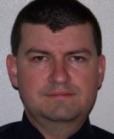 Dr.
Philip Brisk, Assistant Professor, Department of Computer Science and
Engineering, UC Riverside. Dr.
Philip Brisk, Assistant Professor, Department of Computer Science and
Engineering, UC Riverside.
Panelist.
Bio: Philip Brisk received his B.S., M.S., and Ph.D. degrees, all in
Computer Science, from UCLA in 2002, 2003, and 2006 respectively. From
2006-2009, he was a postdoctoral scholar in the Processor Architecture
Laboratory at the Ecole Polytechnique Federale
de Lausanne (EPFL) in Switzerland. Since 2009, he has been an Assistant
Professor in the Department of Computer Science and Engineering at the
University of California, Riverside.
Dr. Brisk's research interests include embedded processor architecture and
customization, FPGAs and reconfigurable computing, compilers, VLSI-CAD,
computer arithmetic, and emerging microfluidic technologies. He has received
best paper awards at CASES 2007 and FPL 2009, and has been nominated for
best paper awards at DAC 2007 and HiPEAC 2010. He is a member of the ACM and
IEEE.
|
|
|
|
Panelist
Target Compiler Technologies
 |
 Steve
Cox, VP, Target Compiler Technologies. Steve
Cox, VP, Target Compiler Technologies.
Panelist
Bio: Steve Cox joined Target Compiler Technologies in 2006 and leads
Target’s North American activities. Steve has a long history of innovation
in the design and verification of processors and SoCs, including work at
companies such as Accelchip, Apple, Ball Aerospace, Cadence, Cisco,
Conexant, Intel, Motorola/Freescale, Nortel, and Solbourne Computer. Steve
holds patents in the area of transaction-based verification of SoCs and is
an alumnus of the University of Colorado. Steve currently resides in
Boulder.
|
|
|
|
Panelist
Intel
 |
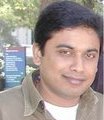 Dr.
Shireesh Verma, Pre-Silicon Validation Lead, Intel. Dr.
Shireesh Verma, Pre-Silicon Validation Lead, Intel.
Panelist
Bio:
Shireesh Verma is
currently with Intel. Prior to that he has held research and
development positions at Conexant, Qualcomm Inc. and Marvell Semiconductor Inc.
He has been involved in extensive research on various aspects of
verification like, automatic generation and evaluation of functional and
syntactic coverage models, coverage feedback driven test generation,
behavioral error models, low power verification techniques, etc for the past
9 years. He obtained his PhD degree in Information and Computer
Science from the University of California Irvine. He has led several
in-house Design and Verification tool development efforts during his
industrial stints. He has published numerous conference papers, journal and
magazine articles and a book chapter. He has also delivered numerous invited
tutorials and has been invited at several panels in these areas. He
serves on the editorial board of Journal of Low Power Electronics (JOLPE).
He is also a member of the Accellera P1801 Low Power Working Group and the
IEEE Design Automation Standards Committee. He is a member of the Technical
Program Committees of "ACM/IEEE Design Automation and Test in Europe (DATE)
Conference", "IEEE International High Level design Validation and Test (HLDVT)
Workshop", and "International Symposium on Quality Electronic Design (ISQED)".
He is also a member of the organizing committee (Publicity chair) of the
HLDVT 2009. |
|
|
|
Breker Verification Systems
 |
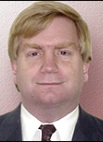 Thomas
L. Anderson, Vice President, Marketing, Breker Verification Systems. Thomas
L. Anderson, Vice President, Marketing, Breker Verification Systems.
Panelist
Bio: Thomas L. Anderson is Vice President, Marketing at Breker
Verification Systems in Mountain View, CA. He previously served as Product
Management Group Director for Advanced Verification Solutions at Cadence,
Technical Marketing Director in the Verification Group at Synopsys and Vice
President of Applications Engineering at 0-In Design Automation. Before
moving into EDA he was Vice President of Engineering at IP pioneer Virtual
Chips, following roles in ASIC design and management. Tom has presented more
than 100 conference talks, published more than 150 papers and articles, and
contributed to 12 books. He holds a BS in Computer Systems Engineering from
the University of Massachusetts at Amherst and an MS in Electrical
Engineering and Computer Science from the Massachusetts Institute of
Technology (MIT).
|
|
|
|
Panelist
Emulex
 |
 Tom Ambrose, Sr.
Director Engineering, Architecture, Emulex. Tom Ambrose, Sr.
Director Engineering, Architecture, Emulex.
Panelist
Bio: Tom Ambrose is Sr. Director of Engineering in the Systems, Technology,
and Architecture Department at Emulex Corporation. He is responsible for
defining ASIC architectures and product requirements for networking and
storage products. He has 20 years of experience in ASIC design and
management for products, including Ethernet and Fibre Channel adaptors and
switches, and consumer printers. Mr. Ambrose holds a B.S. of Electrical and
Computer Engineering from Carnegie Mellon University.
|
|
|
|
Panelist
GigOptix Inc.
 |
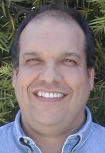 Wayne
Locke, Director of ASIC Engineering, GigOptix. Wayne
Locke, Director of ASIC Engineering, GigOptix.
Panelist
Bio: Wayne has more than 25 years of experience in the
semiconductor industry, primarily in ASIC design. He came to Gigoptix
through the acquisition of the ChipX ASIC business in 2009. Wayne has held
engineering management roles at Texas Instruments, VLSI Technology, and
Prairiecomm prior to joining ChipX in 2004. Wayne earned BS and MS degrees
in Electrical Engineering from Duke University.
|
|
|
|
Lunch
|
Lunch |
|
|
|
|
FPGAs &
SoCs: Trends, Security, Reliability & Verification in Designing Complex SoC
Platforms.
Track Chairman: Professor, Nader Bagherzadeh, University of
California, Irvine (UCI), EECS.
|
|
|
|
Altera
Keynote
 |
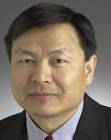 Dr.
Mike Peng Li, Fellow, Altera Corporation. Dr.
Mike Peng Li, Fellow, Altera Corporation.
Keynote: "FPGAs and the Era of Silicon Convergence."
Abstract: Customer demand and
the economies of the industry are driving a trend towards “silicon
convergence.” Each new silicon process node allows chip designers to put
more components-processors, accelerators, memory, and peripheral
controllers, high-speed I/Os and photonic ICs-onto a single chip. More
components means more capability, higher performance, higher throughput,
lower power, and less area and space which are in high demand by system
designers developing tomorrow’s cutting edge technologies. 3D and photonic
enabled SoC FPGAs are leading the way in this trend and delivering
customizable functionality and hardware acceleration for wired and wireless
communications, computing, storage, military, industrial and automotive
applications.
Bio: Dr. Li has been with
Altera Corporation since Sept., 2007 and currently is an Altera Fellow. He
is a corporate expert and adviser, as well as CTO office principal
investigator, on high-speed link/standards, SERDES architecture, electrical
and optical signaling, silicon photonics, optical FPGA, high-speed debug and
test, jitter, noise, signal and power integrity. He was the Chief Technology
Officer (CTO) for Wavecrest Corporation from 2000-2007. Dr. Li is a Fellow
of IEEE, and an affiliated professor at the Department of Electrical
Engineering, University of Washington, Seattle. He holds a Ph.D. in physics
(1991), an M.S.E (1991), in electrical and computer engineering and an M.S.
in physics (1987), from the University of Alabama, Huntsville. He also holds
a B.S (1985) in space physics from the University of Science and Technology
of China. He was a Post Dr. and then a research scientist at the University
of California, Berkeley (1991-1995).
|
|
|
|
Microsemi
 |
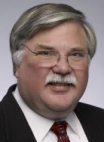 Dr.
Richard Newell, Senior Principal Product Architect, SoC Products Group,
Microsemi Corporation. Dr.
Richard Newell, Senior Principal Product Architect, SoC Products Group,
Microsemi Corporation.
Recent advances in the security of FPGA and cSoC devices.
Abstract: TBD.
Bio: Richard Newell is
Senior Principal Product Architect at Microsemi Corporation, SoC Products
Group where he has been active in planning the security features for the
next generation of Flash-based FPGAs and customizable System-on-Chips (cSoCs)
as well as expanding the available solutions for Microsemi’s current device
families. Richard has an electrical engineering background, with experience
in analog and digital signal processing, cryptography, control systems,
inertial sensors and systems, and FPGAs. He is an alumni of the University
of Iowa. He is the recipient of approximately one dozen U.S. patents and is
a member of the Tau Beta Pi and Eta Kappa Nu honorary engineering societies.
|
|
|
|
Breker Verification Systems
 |
 Thomas
L. Anderson, Vice President, Marketing, Breker Verification Systems. Thomas
L. Anderson, Vice President, Marketing, Breker Verification Systems.
SoC Verification from the Inside Out.
Abstract: There is a dangerous emerging trend in the system-on-chip
(SoC) world: the assumption that well-verified IP blocks can be quickly
assembled and shipped as a complete SoC. A team making this assumption may
indeed be able to stitch the IP blocks together easily; modern fabric-based
SoC platform architectures and chip-assembly tools work well. However, the
team generally performs minimal full-chip verification, under this same
assumption that thorough block-level verification is enough to “stitch and
ship” the SoC. The truth is very different. Even IP blocks that are
verified 100% standalone may behave very differently when stitched into the
full SoC. The IP blocks must share a broad range of chip-level resources,
such as memories, bus fabric, and multiple I/O channels. Two IP blocks that
access memory fine on their own may conflict when connected together. The
combined IP bandwidth requirements may overwhelm the bus fabric, requiring
the insertion of wait states and diminished performance. Similarly, multiple
IP blocks trying to access the same I/O channel may exceed its capacity. Why
doesn’t the SoC verification team do a better job at the full-chip level? Of
course, they are relying on the same incorrect assumption. Project
management may make this assumption as well and allot little time in the
schedule for full-SoC verification. Further, it is hard to develop a
full-chip testbench that can stress the corner cases involving shared
resources. This is verification “from the outside in” that takes no
advantage of the powerful processors embedded within the SoC. Even if the
verification team writes a few C tests to run on the embedded processors,
these tests have no link to the testbench. This session presents a novel
approach to verifying the SoC from the inside out, generating self-verifying
C test cases that run on the embedded processors. For test cases that read
or write data from the chip’s I/O channels, the test cases coordinate with
appropriate testbench components. Since the real power of the SoC lies in
its processors, leveraging them for verification makes it much easier to
exercise corner-case conditions than working purely from an external
testbench. The result is more thorough verification before tape-out and a
higher likelihood of first-silicon success.
Bio: Thomas L. Anderson is Vice President, Marketing at Breker
Verification Systems in Mountain View, CA. He previously served as Product
Management Group Director for Advanced Verification Solutions at Cadence,
Technical Marketing Director in the Verification Group at Synopsys and Vice
President of Applications Engineering at 0-In Design Automation. Before
moving into EDA he was Vice President of Engineering at IP pioneer Virtual
Chips, following roles in ASIC design and management. Tom has presented more
than 100 conference talks, published more than 150 papers and articles, and
contributed to 12 books. He holds a BS in Computer Systems Engineering from
the University of Massachusetts at Amherst and an MS in Electrical
Engineering and Computer Science from the Massachusetts Institute of
Technology (MIT).
|
|
|
|
UCI
 |
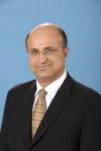 Professor,
Nader Bagherzadeh, UCI, EECS. Professor,
Nader Bagherzadeh, UCI, EECS.
Design of Robust and Reliable Routing Algorithms for Network-on-Chip
Architectures.
Abstract: Network-on-Chip
(NoC) systems have been proposed to achieve high performance computing where
multiple processors are integrated into one chip. As the number of cores
increases and the chips are scaled in the deep submicron technology, NoC
systems become subject to physical manufacture defects and running-time
vulnerability, which result in faults. Faults affect the performance and
functionality of the NoC systems and result in communication malfunctions.
Nevertheless, NoC architectures have enough resources to tolerate faults by
rerouting packets and remapping tasks. The rerouting algorithms may
introduce new issues such as deadlock and livelock cases. In this
presentation, we will discuss how to design routing algorithms that tolerate
multiple faults and feature deadlock and livelock freedom.
Bio:
Dr. Nader Bagherzadeh has
been involved in research and development in the areas of computer
architecture, reconfigurable computing, VLSI chip design, and computer
graphics. For almost ten years ago, he was the first researcher working on
the VLSI design of a Very Long Instruction Word (VLIW) processor.
Since then, he has been working on multithreaded superscalars and their
application to signal processing and general purpose computing. His
current project at UC, Irvine is concerned with the design of coarse grain
reconfigurable pixel processors for video applications. The proposed
architecture, called MorphoSys, is versatile enough to be used for digital
signal processing tasks such as the ones encountered in wireless
communications and sonar processing. DARPA and NSF fund the MorphoSys
project (total support $1.5 million). Dr. Bagherzadeh was the Chair of
Department of Electrical and Computer Engineering in the Henry Samueli
School of Engineering at University of California, Irvine. Before
joining UC, Irvine, from 1979 to 1984, he was a member of the technical
staff (MTS) at AT&T Bell Laboratories, developing the hardware and software
components of the next-generation digital switching systems (#5 ESS).
Dr. Bagherzadeh holds a Ph.D. in computer engineering from The University of
Texas at Austin. As a Professor, he has published more than a hundred
articles in peer-reviewed journals and conference papers in areas such as
advanced computer architecture, system software techniques, and high
performance algorithms. He has trained hundreds of students who have
assumed key positions in software and computer systems design companies in
the past twelve years. He has been a Principal Investigator (PI) or
Co-PI on more than $2.5 million worth of research grants for developing
next-generation computer systems for solving computationally intensive
applications related to signal and image processing.
|
|
|
|
Afternoon
Break |
Afternoon
Break |
|
|
|
Xilinx
 |
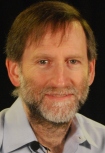 Austin
Lesea, Xilinx Corporation. Austin
Lesea, Xilinx Corporation.
SoC Reliability and Quality.
Abstract: When considering a system-on-chip for your application,
issues of quality, reliability, availability, and product longevity must be
taken into account at the beginning of any project. Within the reliability
category alone, there are many factors to be considered including software
reliability, probability of soft and hard errors and the expected lifetime
of the device once it's in the field. Additionally, the market served by the
end-product will most often have its own requirements that may become hidden
costs, or even risks, if not addressed upfront. For example, safety-critical
standards for specific markets such as automotive, industrial and aerospace
may have requirements that can lead to impossible-to-meet specifications for
those who choose to fabricate their own devices. This talk will detail what
you need to know to address safety-critical markets, and use Xilinx's
example of providing the silicon, tools, development platforms, intellectual
property (IP) along with the training and support to meet the needs of
SoC-based systems using the Zynq-7000 All Programmable SoC, a programmable
logic device with an integrated industry-standard dual ARM(r) Cortex(tm)-A9
MPCore(tm) subsystem.
Bio: Austin Lesea (M’75)
Austin received his Bachelor of Science in Electrical Engineering and
Computer Sciences, University of California at Berkeley in 1975. In 1976 he
received his Masters of Science in Electrical Engineering and Computer
Sciences, University of California at Berkeley in optimization, control, and
communications theory. He has spent the first year of his career teaching,
and writing the book, Microprocessor Interfacing Techniques (1976, Sybex
Publishing, Berkeley, California). He spent the next 13 years designing
telecommunications transmission (copper, fiber optic, digital microwave),
switching (PBX and ACD systems), and synchronization systems (building
integrated timing systems). During that time, he spent eight years on the
ATIS/ANSI T1 Committees helping write the SONET and TI CPE standards. Mr.
Lesea then spent 11 years at Xilinx where as a Principal Engineer in the IC
design group where he has been part of the design efforts for five product
families. His last project was as the lead hardware architect and radiative
effects designer for the Xilinx Q5 “rad-hard” by design FPGA device, now in
use in orbital space applications (in orbit today, and chosen for many
missions). He then joined Xilinx Research Labs where he been looking at soft
error effects for the last four years. Recent interests also include
encryption and security. At the time of this paper, he holds 66 patents.
|
|
|
|
Freescale Semiconductor, Inc.
 |
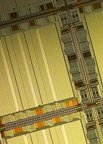 Thinh
Ngo, Design Verification Engineer; Jain Sakar, Senior Verification Engineer;
Randy Pascarella, Senior Design Engineer. Freescale Semiconductor, Inc. Thinh
Ngo, Design Verification Engineer; Jain Sakar, Senior Verification Engineer;
Randy Pascarella, Senior Design Engineer. Freescale Semiconductor, Inc.
A Methodology to Verify SoC Straps, Parameter Settings and Register Resets.
Abstract: SoC needs to correctly strap, or tie off, a set of built-time
vectors for each supported product personality. For instance, a strap vector
may be used to configure an embedded core 's personality (i.e. number of
threads, cores, clusters). Likewise, build parameters are widely used to
personalize RTL for each product personality. Thousands of parameters are
used in each SOC to configure bus widths, FIFO depths, clock ratios, etc.
Moreover, register reset values are product-dependent. They define product
identification, version number, etc. Traditionally, strap and parameter
settings are verified via design review and lint checking. Register reset
values are verified via directed tests. It is apparent that these methods do
not scale well. As SOC personalities proliferate, the set of build
configuration vectors, parameters, and values multiplies and increases the
risk of error. In this paper, we propose a universal methodology where
immediate assertions are used to rigorously verify these settings. This
methodology offers a number of advantages. Firstly, immediate assertions
functionally verify these settings. Secondly, they efficiently execute once
per test. Thirdly, they effectively verify every test; Fourthly, they are
portable and re-useable since they can bind to hardware modules as VIPs.
Finally, they are concise, easy to write and read, and as a result they can
be readily scripted for extraction from design specifications and reporting
from verification plans.
Bio: TBD.
|
|
| |
Afternoon
Break |
Afternoon
Break
|
|
|
|
Panel
(FREE for Everyone!)
|
“Technology &
Entrepreneurship: Dreams, Realities & Opportunities”
Open To Everyone
|
|
|
|
Savant
Company Inc.

SoC
Conference
Source Scientific
Stetina Brunda
Garred & Brucker.
UCI
BioPhotas, Inc.
Power Connections
|
 Farhad
Mafie, SoC Conference Chairman,
IEEE OC SSCS & OCEN Chairs. Farhad
Mafie, SoC Conference Chairman,
IEEE OC SSCS & OCEN Chairs.
Moderator
Bio: Farhad Mafie is SoC Conference
Chairman. He has over
20 years of experience in semiconductor and computer businesses and more
than 10 years of university-level teaching experience. He is the former Vice
President of Marketing and Engineering at Toshiba Semiconductor. He has also
worked in strategic marketing, project and design engineering at Lucent
Technologies, Unisys, and MSI Data. Farhad has a Master of Science and a
Bachelor of Science degree in Electronic Engineering from California State
University, Fullerton. He is an author and a translator, and his articles
have been published in a variety of journals and Web-based magazines on
technology and political affairs. In 2003, he published the biography of
Iranian poet and Nobel nominee who lived in exile, Nader Naderpour
(1929-2000), Iranian Poet, Thinker, Patriot. Farhad is also Editor-in-Chief
for the CRC Press SoC Design and Technologies Book Series, which includes
(1) Low-Power NoC for High-Performance SoC Design and (2) Design of
Cost-Efficient Interconnect Processing Units. Farhad is an active member of
IEEE, and he is the chair of IEEE Orange County Solid-State Circuits Society
(SSCS), as well as IEEE Orange County Entrepreneurs' Network (OCEN). He is
also a member of two UCI Advisory Committees: Communication System
Engineering and Embedded System Engineering Certificate Programs.
Panelists:
1. Richard W. Henson, CEO, Source
Scientific, LLC.
2.
Eric Tanezaki, Intellectual Property Law Partner, Stetina Brunda
Garred & Brucker.
3. Patrick Johnson, President & CEO, BioPhotas, Inc.
4. Susan Howington, CEO & Founder, Power Connections.
5. Dr. Goran Matijasevic, Executive Director of the Chief Executive
Roundtable at the University of California, Irvine.
This Panel Is Open To
Everyone . . . Register for FREE Panel Pass
More Updates Coming
Soon . . .
Several Opportunities to Win
various Prizes During this Panel Discussion . . .
Don't Miss Out!
|
|
|
|
Source Scientific.
 |
 Richard
W. Henson, CEO, Source Scientific, LLC. Richard
W. Henson, CEO, Source Scientific, LLC.
Panelist
Bio: Richard Henson is CEO and one of the founders of Source Scientific,
LLC, a medical instrument and device development firm in Irvine, California.
Here, he and his partners developed original technology used in diagnostics.
Today, Source Scientific develops and manufactures products for many
well-known in-vitro diagnostic, ophthalmic, surgical and medical device
companies. An experienced CEO with public company experience, Richard
has worked with many high-tech firms in biomedical, consumer and critical
power industries. He has a strong combination of technical, sales, marketing
and managerial experience. He spent several years in Europe with Swiss-based
manufacturers of critical power equipment for heavy industrial markets
including nuclear, power generation, oil & gas, petrochemical and
transportation. He has also served as President of Clary Corporation, a
public company that manufactures harsh environment power systems for
medical, military and transportation applications. Mr. Henson also
serves on the CEO Roundtable at UC Irvine and the Octane Board of Directors.
He is an alumnus of the Anderson School of Business at UCLA. He also
attended California State University, Long Beach (CSULB). He has 4 children
and lives in Laguna Beach, California.
|
|
|
|
Stetina Brunda Garred &
Brucker
 |
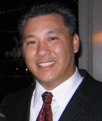 Eric
Tanezaki, Intellectual Property Law Partner, Stetina Brunda Garred & Brucker. Eric
Tanezaki, Intellectual Property Law Partner, Stetina Brunda Garred & Brucker.
Panelist
Bio:
Eric is a partner of Stetina Brunda Garred & Brucker, a boutique full
service intellectual property law firm. He has represented numerous
companies in various industries in relation to patent, trademark and
copyright matters, seeking rights as well as related licensing. He received
his undergraduate engineering degree from the University of Southern
California, and his law degree from the McGeorge School of Law, University
of the Pacific. Prior to law school Eric worked in the aerospace industry.
Eric is the Executive Director of the Southern California Venture Network (SCVN.org).
In addition, Eric is the IP Law Mentor to the USC Stevens Institute for
Innovation. |
|
|
|
University of California,
Irvine
 |
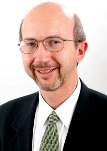 Dr.
Goran Matijasevic, Executive Director of the Chief Executive Roundtable at
the University of California, Irvine. Dr.
Goran Matijasevic, Executive Director of the Chief Executive Roundtable at
the University of California, Irvine.
Panelist
Bio:
Dr. Goran Matijasevic is Executive Director of the Chief Executive
Roundtable at the University of California, Irvine. In that capacity, he
oversees and advances research collaborations and strategic initiatives
associated with Roundtable programs, protocol and mission objectives. He
also serves as UC Irvine's ambassador to the local and national business
community, establishing partnerships and opportunities that serve to enhance
leader-to-leader connections across all campus interdisciplinary fields.
Prior to this position, he was director of research development at The Henry
Samueli School of Engineering at UC Irvine, as well as research coordinator
of the Integrated Nanosystems Research Facility, where he worked on
formation of new industry-university and academic collaborations, especially
focusing on new interdisciplinary research initiatives. Prior to UCI, he
worked as a senior engineer at QPlus, a telecommunications start-up company,
and Director of Research and Ormet Technologies, a developer of electronic
materials and technologies. He managed multiple SBIR projects that led to
several industry consortia projects, as well as a license agreement with a
Fortune 100 company. He has 4 U.S. patents, 3 book chapters, and over 40
conference and journal publications and has served on the NEMI Industry
Roadmap committee. Goran is currently on the OCTANe (Orange County
Technology Action Network) Biomedical Industry Leadership Council, the Board
of Southern California Biomedical Council, and the advisory boards of 2-1-1
Orange County and TriTech SBDC. He is Vice President of the University
Industry Demonstration Partnership (UIDP), a national organization working
under the auspices of the National Academies. Goran received his PhD from UC
Irvine in Electrical and Computer Engineering and his MBA from Pepperdine
University. He may be reached at goran@uci.edu.
|
|
|
|
Power Connections
 |
 Susan
Howington, CEO & Founder, Power Connections. Susan
Howington, CEO & Founder, Power Connections.
Panelist
Bio:
Susan Howington is a sought-after expert in the Executive Career Transition
field, applying her practical knowledge and visionary wisdom as a
consultant, coach, author and industry speaker. Her success derives from her
understanding that in circumstances of executive outplacement, nothing
replaces the effectiveness of human interaction and person to person
connections. Through her company, Power Connections, Susan utilizes her
highly respected reputation to assist companies in transitioning their
executives during outplacement initiatives. Susan made her mark in the
industry throughout her executive tenure with the firm of Lee Hecht
Harrison, a global player in outplacement and executive coaching services.
Under Susan’s leadership as Senior Vice President and Managing Director of
the Southern California region, the company reached premier executive status
in Orange County. Likewise, taking an active interest personally
and professionally in the emerging coaching industry, Susan became Lee Hecht
Harrison’s top achiever in sales of executive coaching and leadership
development services. She received the 2003 Lee Hecht Harrison Global
Leadership Consulting Award, participated as a member of the company’s
Executive Strategic Planning Committee for 2005 and 2006; and attained
membership in the company’s prestigious President’s Circle in 2004 and 2005.
Susan’s entrée into the career transitions industry was as an Account
Executive with Drake Beam Morin of Newport Beach. A natural networker, Susan
increased the sales in her territory over 700% in her tenure there. Prior to
entering the career transition industry, Susan performed the roles of
Director of Buyer Services and Director of Business Development with The
Geneva Companies, a mergers and acquisitions firm. Susan was awarded a
leadership scholarship to attend the international Institute of Management
Development (IMD) in Lausanne, Switzerland for two terms, 2005 and 2006. In
Orange County, she was profiled by OC Metro Magazine as one of 15 Orange
County Women Who Inspire Others. She has appeared in the Orange County
Register, Los Angeles Times, national online publications like ABC7 New
York, CBS2 Chicago, Fox Business News, and CareerBuilder.com to name a few.
She is the author of the just released book on Amazon.com called “How Smart
People Sabotage Their Job Search: 10 Mistakes Executives Make and How to Fix
Them.” Susan served on the Orange County Board of the March of Dimes
from 2004 to 2006; and as the Membership Chair of the National Human
Resources Association (NHRA) in 2000. She served as 2008, 2009, 2011
Co-Chair for the National Human Resources Association HR Executive of the
Year Award... She has been a member of Vistage (formerly TEC) since 2002,
and the Marketing Executive Networking Group (MENG) since 2007. Susan
earned a B.S. degree in Sociology with a minor in Psychology from Northern
Arizona University. |
|
|
|
Power Connections
 |
 Patrick
L. Johnson, President & Chief Executive Officer, BioPhotas, Inc. Patrick
L. Johnson, President & Chief Executive Officer, BioPhotas, Inc.
Panelist
Bio:
Patrick L. Johnson – President &Chief Executive Officer – BioPhotas, Inc.
Mr. Johnson is a seasoned executive with P&L leadership in turnarounds,
start-ups, emerging companies, as well as companies challenged with mature
product life cycles. With a history of repeatedly growing sales and gross
margins at double digit growth rates, Patrick has provided leadership in
strategic planning, sales, marketing, corporate branding, product
positioning, and operations. Patrick is a senior executive with 25 years
experience leading manufacturing companies in diverse industries including
medical, dental, aerospace, and motorsports. His recent leadership
experience includes ten years with Pro-Dex, Inc., a publicly-held medical
device manufacturer, serving in the roles of Chief Business Development
Officer, CEO and President, and Board Member. Mr. Johnson left Pro-Dex in
early 2010 to start-up a humanitarian relief organization, The WorldBed
Project. The charter of this organization was to build strategic alliances
with government, NGOs, corporations, and individuals to bring badly needed
funding to Haiti in the aftermath of the earthquake. Prior to Pro-Dex, Mr.
Johnson held senior management positions with Sybron Dental Specialties,
Tycom Dental, and Dabico Inc. Patrick graduated from the University of
California with Honors, earning Bachelors of Arts degrees in Philosophy and
Legal Studies. Patrick also earned his Masters of Arts in Business
Administration from Pepperdine University. Mr. Johnson currently serves as a
Entrepreneur in Residence at Chapman University Leatherby Center for
Entrepreneurship. Patrick is married, the father of three and grew up in the
City of Orange, a 3rd Generation Orange Countian. |
|
|
|
|
Open To Everyone
Reception &
Networking
|
|
|
|
|
10th International SoC
Conference Closed.
|
|
|
|
|
|
|
* Program is subject to change.
SoC Conference Organizing Committee, Technical Advisory Board (TAB), and Savant
Company Inc. reserves the rights to revise or modify the SoC Conference program
(the above program) at its sole discretion.
Copyright © 2003-2012 by Savant Company Inc. All
Worldwide Rights Reserved.
Wafer images courtesy of Intel Corporation, Micron Technologies & Altera Corporation.
| |
|